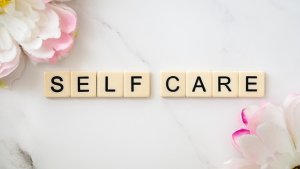In today’s screen-filled lives, we’re wired in long after the sun goes down. From endless scrolling to late-night emails, our devices bathe us in a glow that seems harmless—but the truth is, blue light effects on sleep are more disruptive than many realize. This constant exposure can throw off our natural rhythms, leaving us wired when we should be winding down.
In this post, we’ll break down what blue light really is, why it matters for your sleep, and simple steps you can take to protect your rest in our digital age.
What Is Blue Light?
Blue light is a high-energy, short-wavelength light that’s part of the visible light spectrum. It’s naturally present in sunlight and plays a key role in regulating our circadian rhythm—our internal body clock that tells us when to wake up and when to wind down.
But here’s the catch: artificial sources of blue light, like LED screens, smartphones, tablets, and even energy-efficient lighting, emit concentrated doses of this wavelength long after the sun has set. And that’s where the trouble begins.
How Blue Light Disrupts Sleep
Our bodies are beautifully designed to respond to natural light cues. When the sun rises, blue light signals our brain to suppress melatonin—the hormone that makes us feel sleepy—and helps us feel alert and awake. As the sun sets, melatonin production ramps up, preparing us for rest.
However, exposure to blue light at night confuses this natural rhythm. According to a , blue light suppresses melatonin production more powerfully than other wavelengths. In fact, researchers found that 6.5 hours of blue light exposure suppressed melatonin for twice as long as green light and shifted circadian rhythms by twice as much.
Another review published in Frontiers in Physiology found that blue light exposure in the evening can reduce sleep efficiency and increase tiredness. Even dim light—like the glow from a bedside lamp or a phone screen—can interfere with melatonin secretion and delay sleep onset.
Signs Your Sleep Might Be Affected
If you’ve been struggling with:
- Difficulty falling asleep
- Waking up frequently during the night
- Feeling groggy despite a full night in bed
- Increased screen time before bed
…then blue light could be playing a role.
Many of us don’t connect our digital habits with our sleep quality, but the link is stronger than we think. And the good news? Once we’re aware, we can take simple steps to reclaim our rest.
How to Combat Blue Light Exposure
Here are some practical, research-backed strategies to reduce blue light exposure and support better sleep:
1. Create a Digital Sunset
Aim to power down screens at least 1–2 hours before bedtime. This gives your body time to naturally increase melatonin levels and ease into sleep mode. Instead of scrolling, try reading a physical book, journaling, or practicing gentle stretches.
2. Use Night Mode or Blue Light Filters
Most smartphones, tablets, and computers now offer “Night Shift” or “Night Mode” settings that reduce blue light emissions. You can also install apps like f.lux or use built-in features to automatically adjust screen warmth after sunset.
3. Invest in Blue Light Blocking Glasses
A study published in SLEEP Advances found that wearing amber-tinted glasses in the evening improved sleep quality, especially in individuals with insomnia or delayed sleep phase syndrome. These glasses filter out short-wavelength light while allowing you to continue using devices if needed.
4. Switch to Warmer Lighting
Replace cool-toned LED bulbs with warmer, amber-hued lights in your bedroom and living spaces. This small change can make a big difference in signaling to your brain that it’s time to wind down.
5. Establish a Calming Bedtime Routine
Incorporate rituals that support melatonin production and relaxation—like sipping chamomile tea, diffusing lavender essential oil, or practicing deep breathing. Consistency is key: going to bed and waking up at the same time each day helps reinforce your natural sleep-wake cycle.
Complementary Wellness Practices
As someone who believes in holistic wellness, I always encourage looking at the bigger picture. Reducing blue light is just one piece of the sleep puzzle. Here are a few more tips to support restful nights:
- Limit caffeine after 2 p.m.
- Keep your bedroom cool, dark, and quiet
- Try magnesium-rich foods like almonds, spinach, and bananas
- Explore natural sleep aids like valerian root or melatonin supplements (always consult your healthcare provider first)
And if you’re ready to go deeper, consider a digital detox weekend. Unplugging—even for a day—can reset your nervous system and help you reconnect with your body’s natural rhythms.
Final Thoughts: Blue light effects on sleep
Blue light isn’t the enemy—it’s part of our modern world. But like anything, balance is key. By becoming more mindful of our screen habits and making small, intentional changes, we can protect our sleep, boost our energy, and feel more aligned with our natural rhythms.
So tonight, why not try a screen-free hour before bed? Light a candle, grab a book, and let your body ease into rest. Your future self will thank you.














